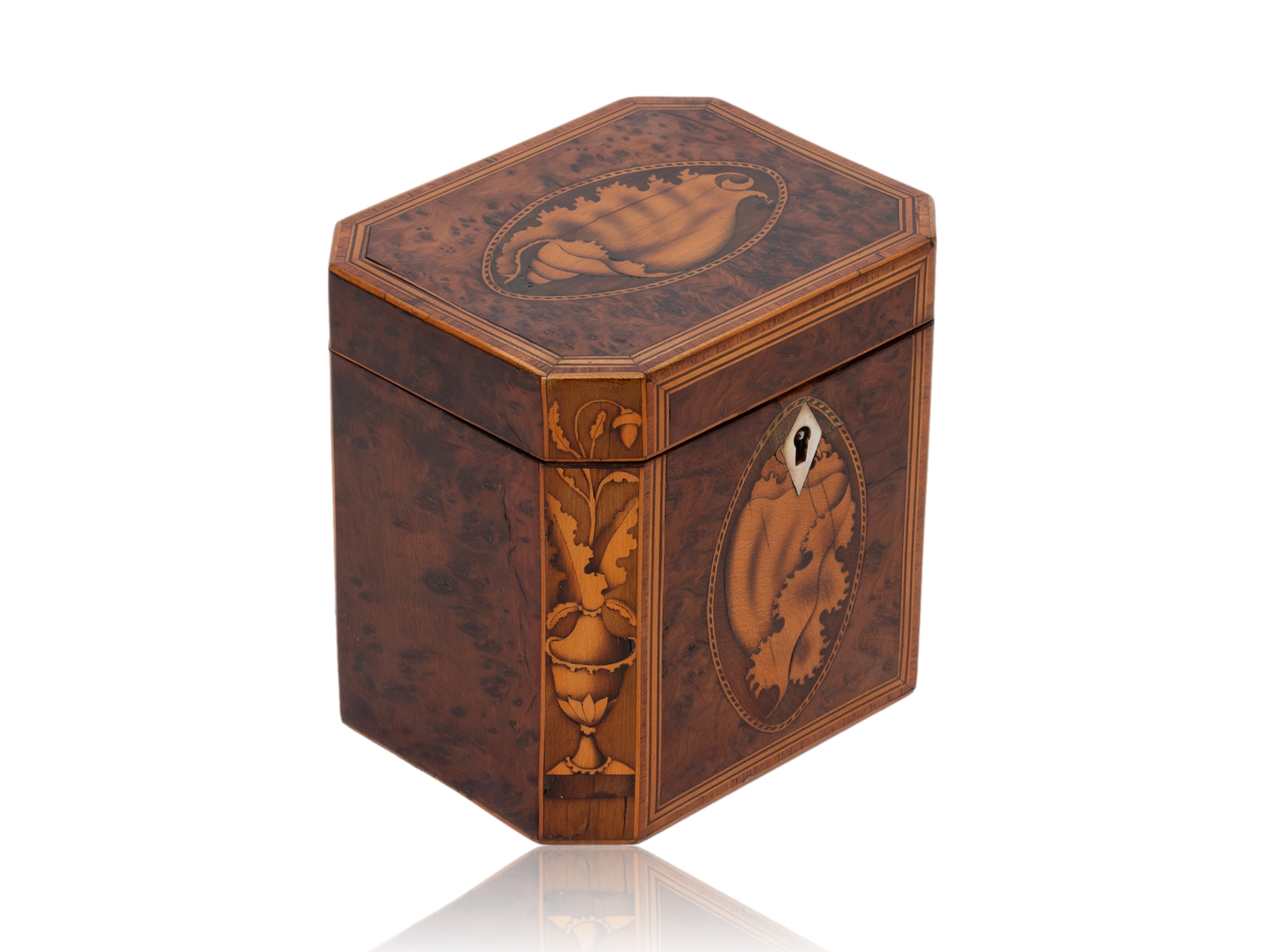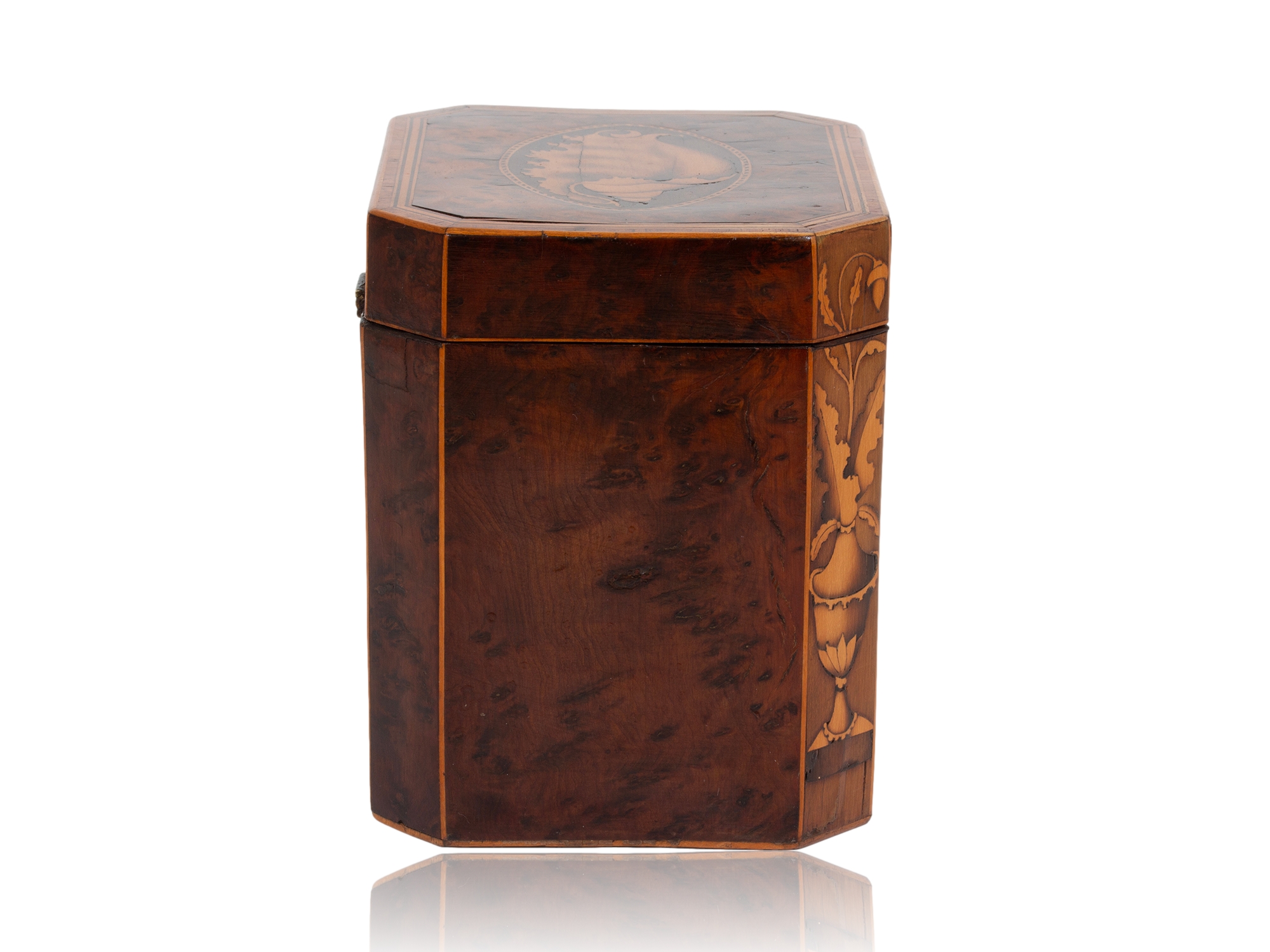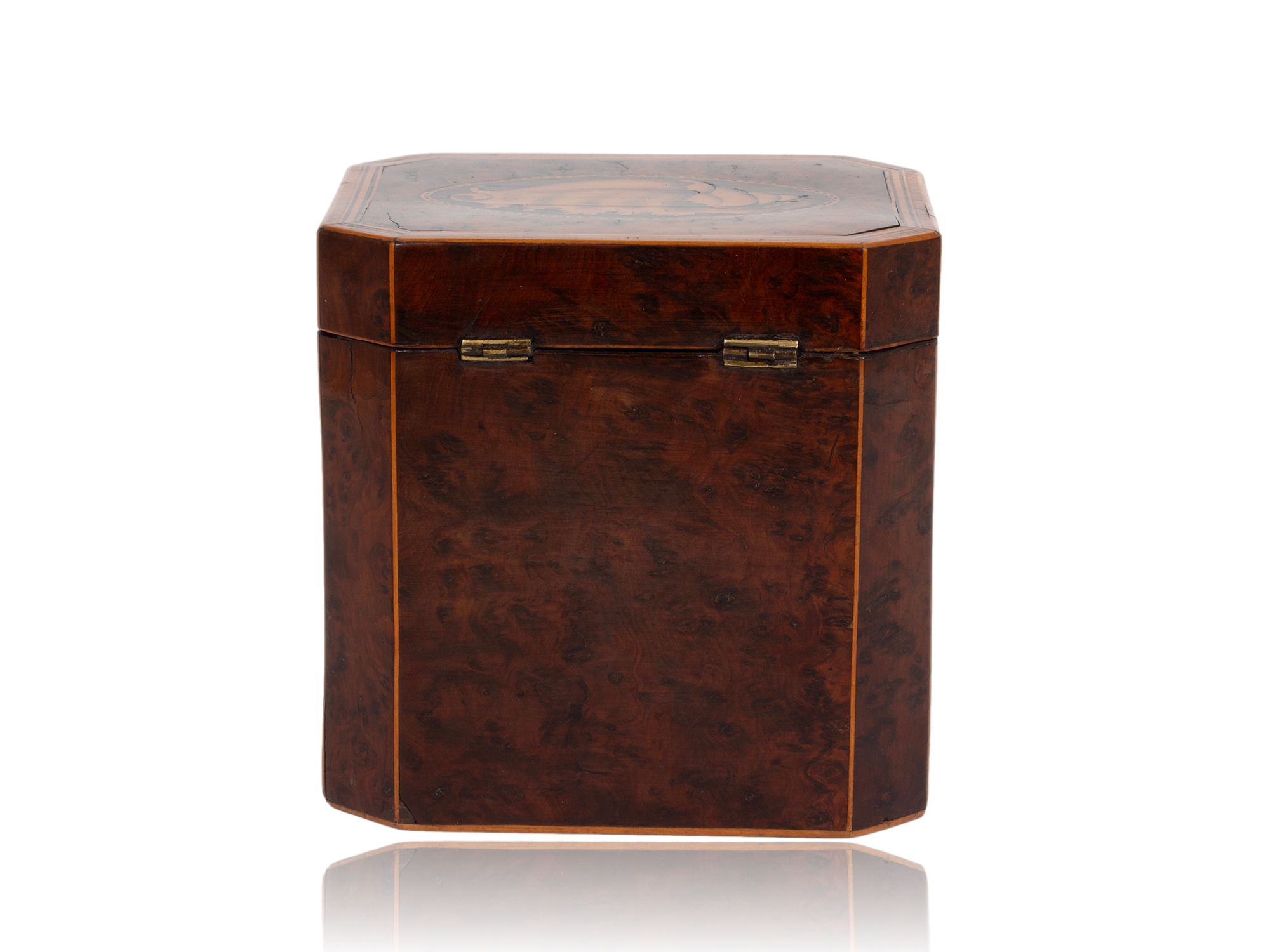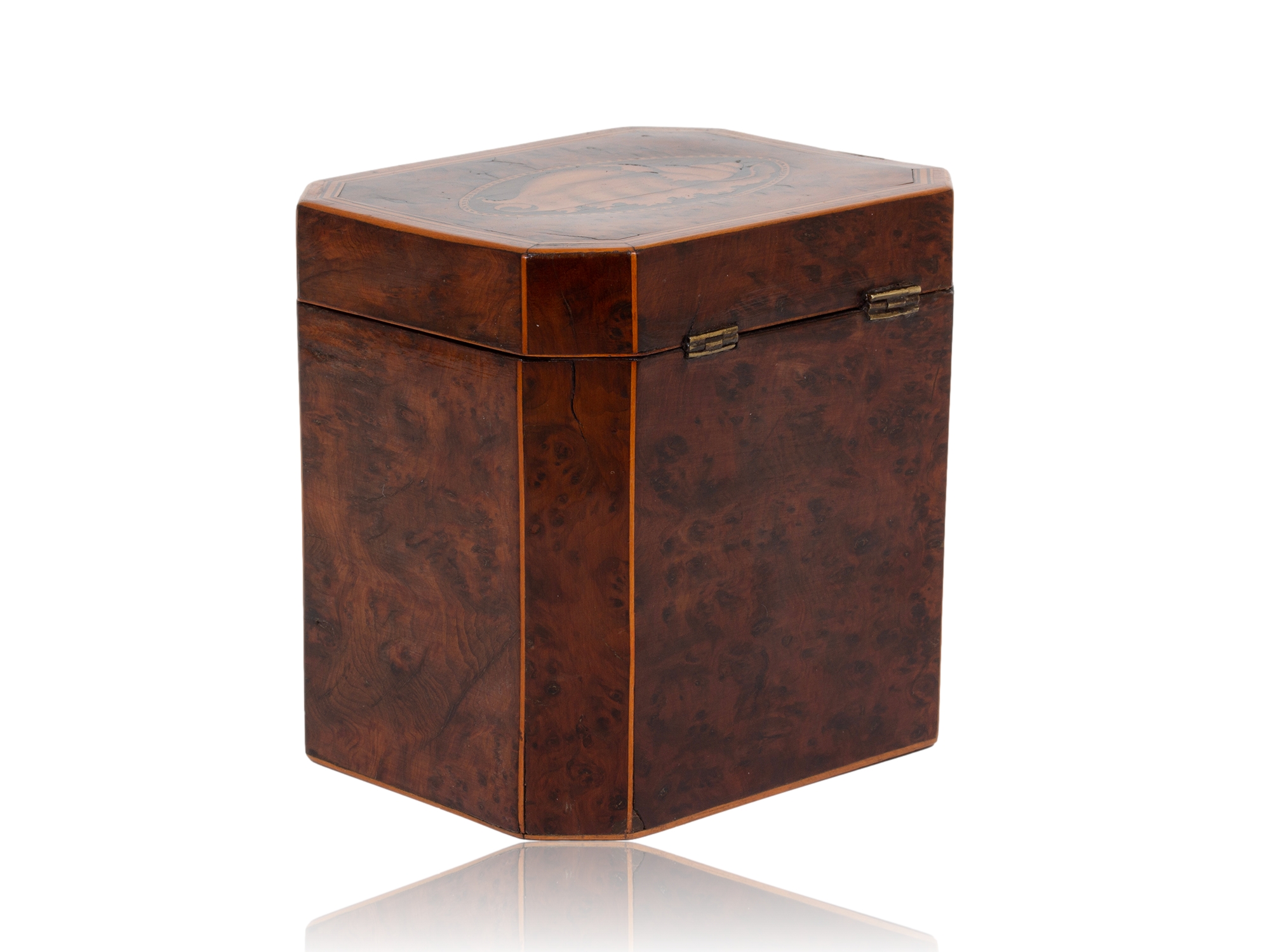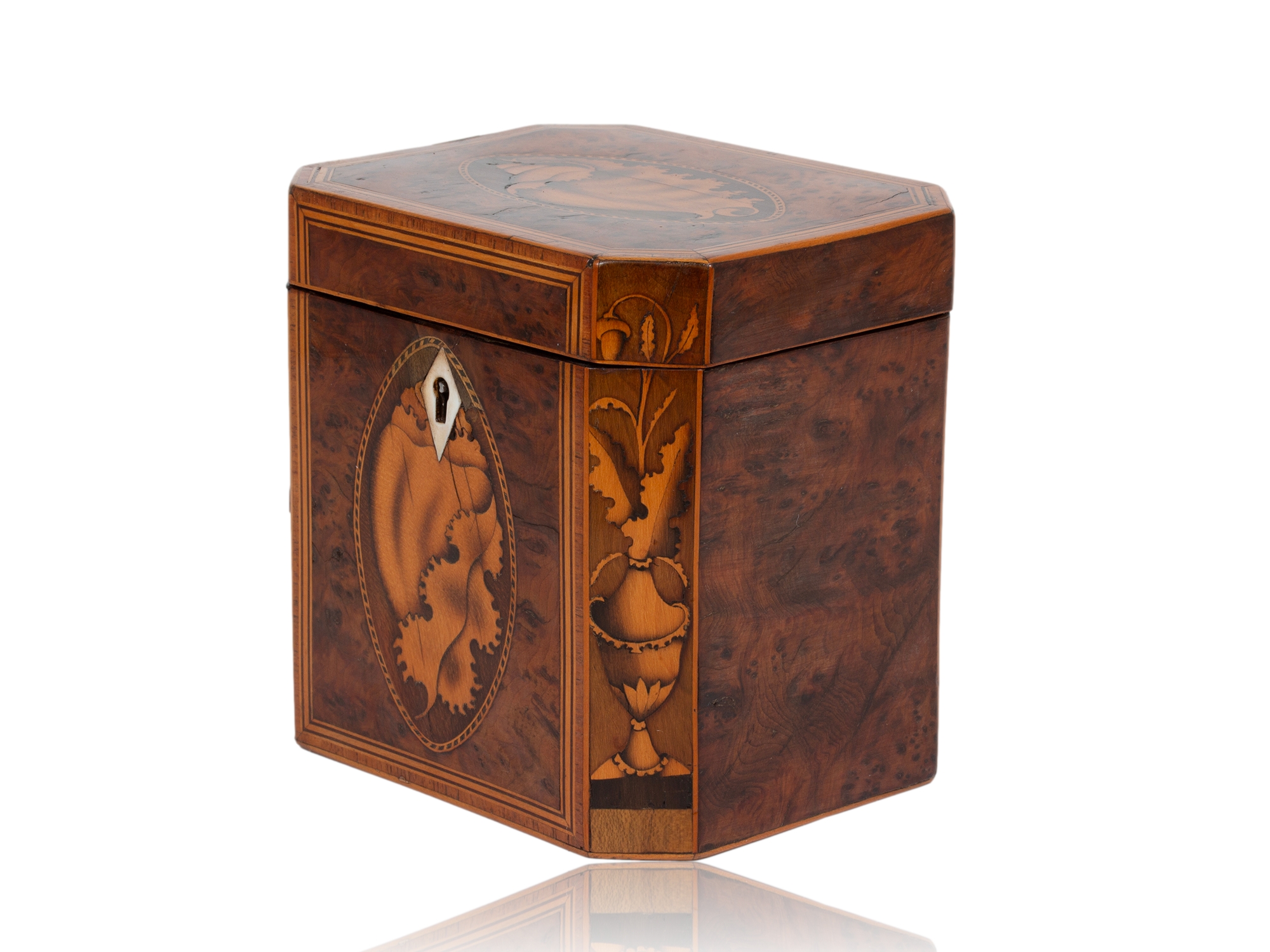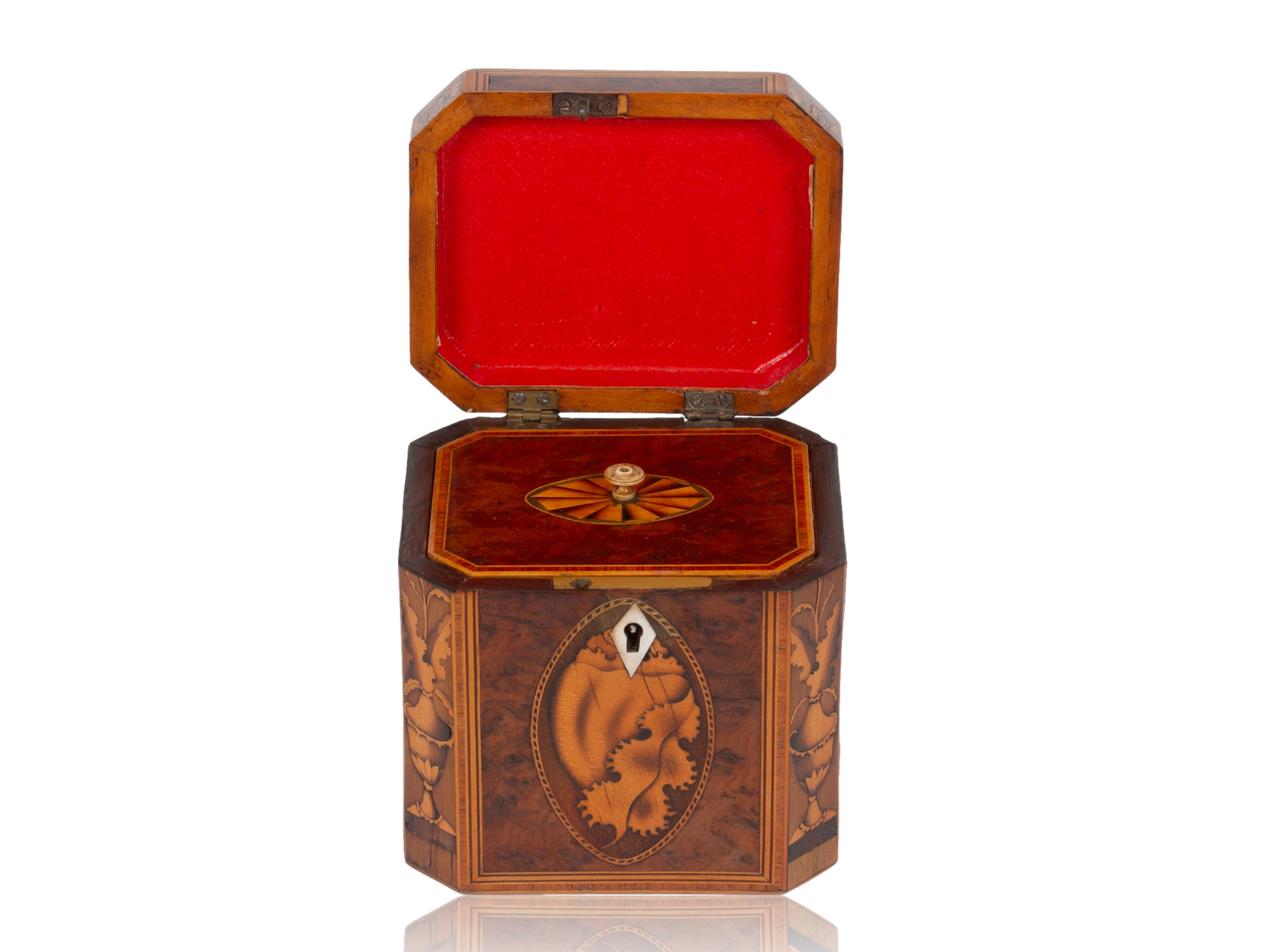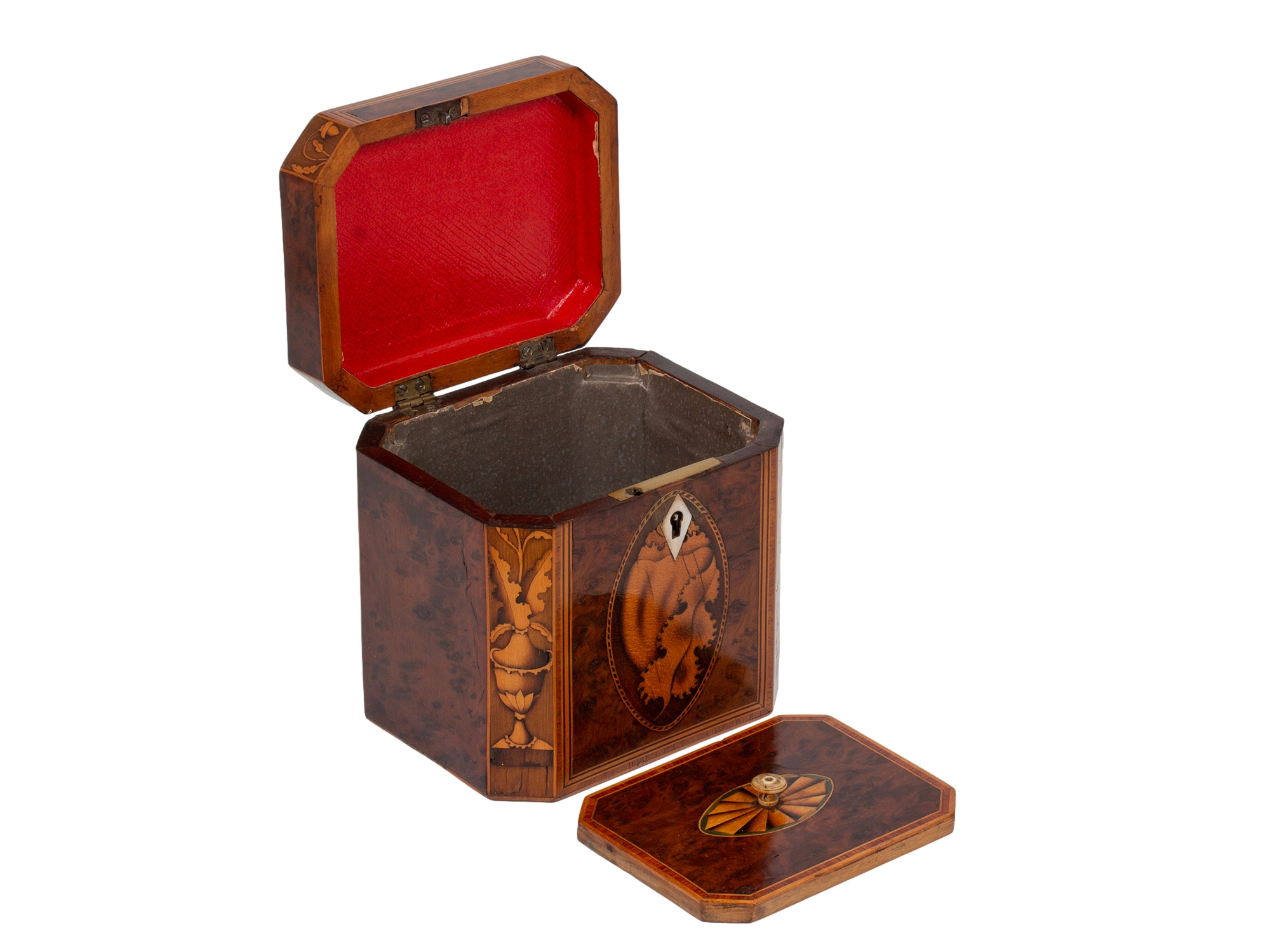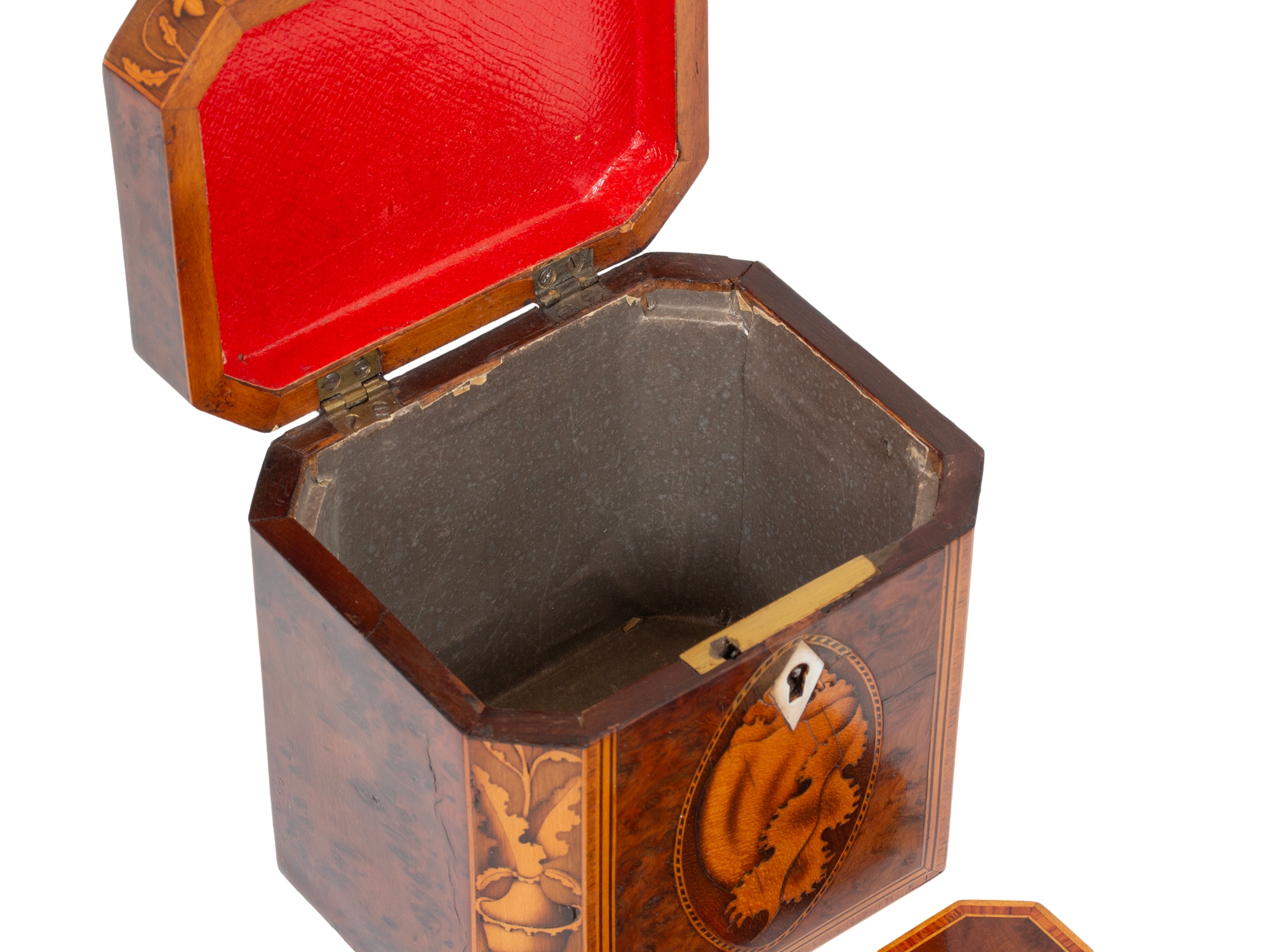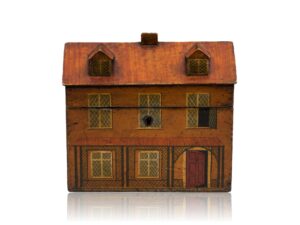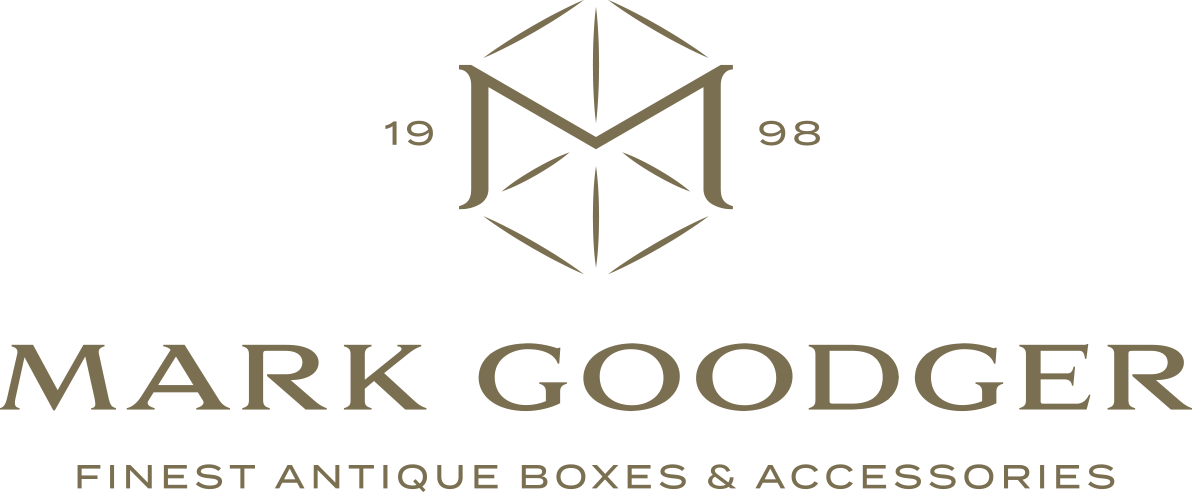Burr Yew Canted Corner Tea Caddy
£1,795.00
Tea Leave Inlaid Canted Corners From our Tea Caddy Collection, we are pleased to offer this beautiful George III Burr Yew Canted Corner Tea Caddy. The Antique Tea Caddy of rectangular shape with canted corners having inlaid Satinwood Tea plants... Read More
Burr Yew Shell Inlaid Tea Caddy dating to the late 18th century George III with conch shell and tea leave inlay Circa 1785

| Dimensions | 12 × 10 × 12 cm |
|---|---|
| Period | |
| Year | |
| Country | |
| Medium | |
| SKU | 501647TVCE |
Description
Description
Tea Leave Inlaid Canted Corners
From our Tea Caddy Collection, we are pleased to offer this beautiful George III Burr Yew Canted Corner Tea Caddy. The Antique Tea Caddy of rectangular shape with canted corners having inlaid Satinwood Tea plants to faces. The lid and front panel feature Tulipwood cross banding with Boxwood stringing and two oval cartouches featuring inlaid Satinwood conch shells with accented designs surrounded by further rope work alternating stringing. To the front a shaped bone escutcheon is located to safely lock the Tea Caddy from prying hands. When opened the Tea Caddy reveals single lidded Tea Caddy compartment with a turned bone handle surrounded by an inlaid fan, burr yew veneered and matching cross banding. The Tea Caddy dates to the Georgian Period during the reign of George III circa 1785.
The Burr Yew Tea caddy has a fully working lock and taselled key.
Burr Yew wood or Burl in the US is the rarest and most sought after. Yew, or Yewtree, originates from Asia, Europe and North Africa. It is yellow-brown to orange-brown and usually conforms to a fine uniform pattern. Yew wood usually has black pips scattered throughout so clean veneers fetch a high price and are reserved for finer items. This wood is ancient and takes hundreds of years to grow. It is extremely rare in larger sizes and is usually found as Veneer on smaller objects such as Tea Caddies.
Satinwood is found in India and Sri Lanka. It has a rich golden colour and an almost reflective sheen. Satinwood is traditionally used for high quality furniture.
Boxwood “Buxus sempervirens” can be found in Europe, Northwest Africa and Southwest Asia. It is a light cream that turns darker to brown when exposed to light. The trees are very small meaning it is suited to smaller projects like edging or inlay instead of veneers.
Tulipwood is also known as Brazilian Tulipwood, Brazilian Pinkwood and Bahia Rosewood. It is found in South America, mainly Brazil. The colour is warm yellow with streaks or brown-red grain.
Georgian era was a period in British history dating from 1714-1837, known as the Georgian era after the Hanoverian kings George I, George II, George III and George IV.
With every purchase from Mark Goodger Antiques, you will receive our latest catalogue, a Certificate of Authenticity, detailed care instructions for your chosen piece and an independent invoice (for insurance purposes) will be enclosed. As well as being protected by a no-hassle, money-back policy, your piece will be entirely insured during the shipping process to ensure the safety of your item.
Additional information
Additional information
| Dimensions | 12 × 10 × 12 cm |
|---|---|
| Period | |
| Year | |
| Country | |
| Medium | |
| SKU | 501647TVCE |

